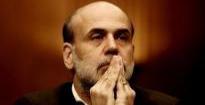Data Suggests Fed Stimulus is Working
 Bloomberg reports:
Bloomberg reports:
Government bonds are falling the most in a year as the gap between yields on longer-term Treasuries show that the Federal Reserve’s second round of quantitative easing may be its last.
The difference between 10- and 30-year yields shrank to 1.05 percentage points, or 105 basis points, on Dec. 15 from a record 1.60 points on Nov. 10, the fastest contraction since the 1980s, according to data compiled by Bloomberg. The shift in the so-called yield curve is taking place as Bank of America Merrill Lynch index data show U.S. bonds due in 10 years or more lost 4.64 percent this month, trimming 2010’s gain to 8.37 percent.
Flattening usually foreshadows the end of Fed interest-rate cuts aimed at stimulating growth. U.S. reports this month showed rising retail sales, higher consumer confidence and a jump in industrial production after the central bank expanded itsbalance sheet to an unprecedented $2.39 trillion, pumping money into the financial system. It’s adding $600 billion more purchasing Treasuries through so-called quantitative easing to keep the economy from deflating.
“A peak in the yield spread between 10s and 30s signals the end of an easing cycle,” said Steven Wieting, managing director of economic and market analysis at Citigroup Inc. “It’s part of a recovery and improved growth expectations. If the outlook is for a stronger recovery, then QE would be limited and they may not expand beyond it.”

